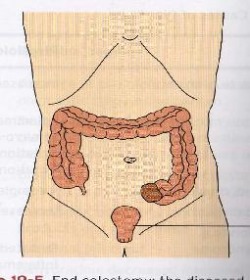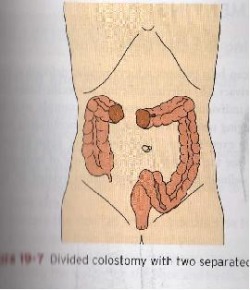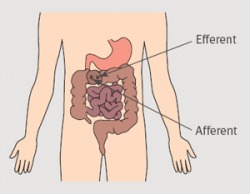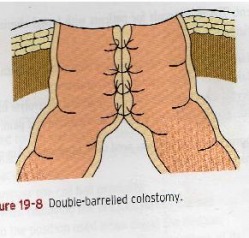Colostomy Techniques
There are many different techniques that a surgeon may use to perfom a colostomy. The most common are explained below.
Single Colostomy

The single colostomy technique can also be called an 'end' or 'terminal' colostomy. This tecnique involves bring one end of the colon out through an opening made in the abdominal wall. In this technique the diseased part of the bowel is removed, bt the rectal pouch still remains.
Divided Colostomy

The Divided colostomy tecnique involves two edges of the colon being brought out through an opening in the abdominal wall.These two edges are seperate. The edge which comes from the digestive/proximal end is normally active, therefore is known as the colostomy. The other edge brought through the abdominal wall is known as the Distal end. The distal end will normally secrete muscous from the bowel, therefore in this situation the distal end may be reffered to as 'mucous fistula'. This tecnique is normally used when spillages of faeces into the bowel needs to be avoided.
Loop Colostomy

The Loop colostomy Techniqe is when the surgeon brings a loop of the bowel up through the opening in the abdominal wall. This loop is normally supported by a plastic bridge, rod or plastic tubing. The surgeon will cut two openings in the abdominal wall. One opening is the proximal/afferent end, and the other is the Distal/efferent end. The afferent end is active and functioning part of the colon, and will pass stools and gas through the stoma. The efferent end is the non active, non functioning part of the colon. This tecnique is normally performed in emergencies and will tend to be located on transverse colon. A loop colostomy can be temporary or permanent.
Double - Barrelled Colostomy

This technique is very similar to the loop colostomy in the way that there is an proximal end and distal end which are both brought up through an opening in the abdominal wall.The difference is that in the double barrelled colostomy the proximal end and distal end are sutured together for about 4 inches. (Shown in diagram above).
